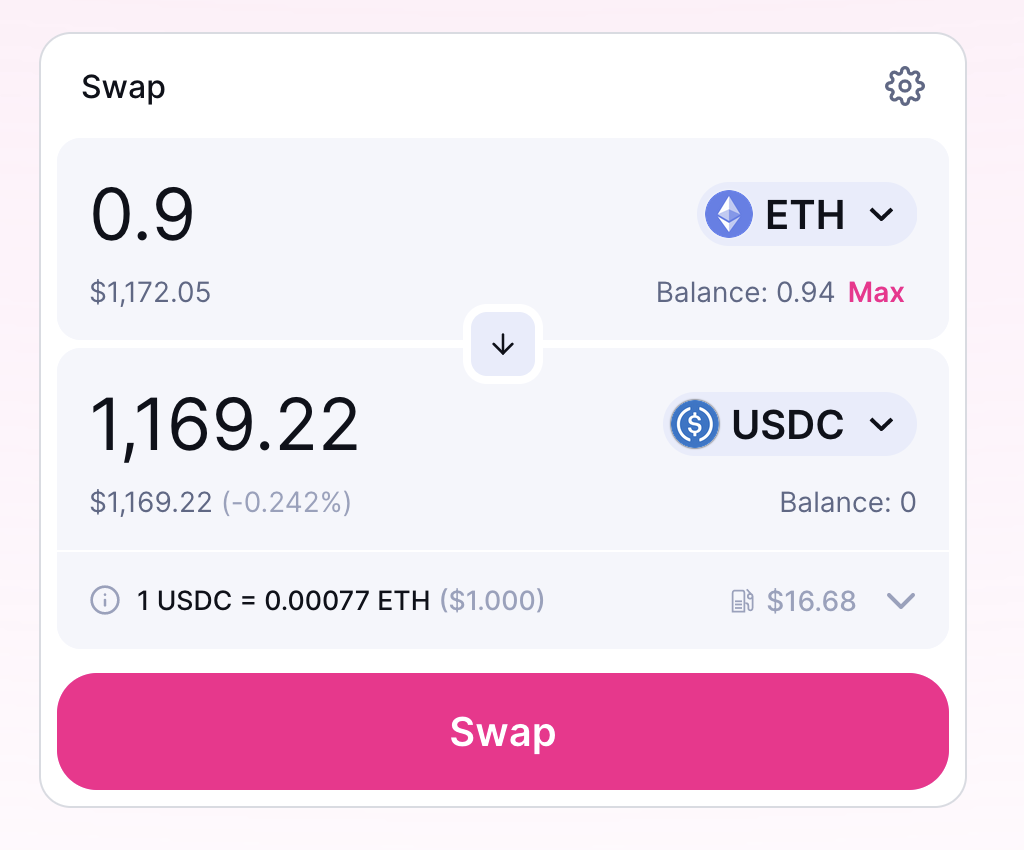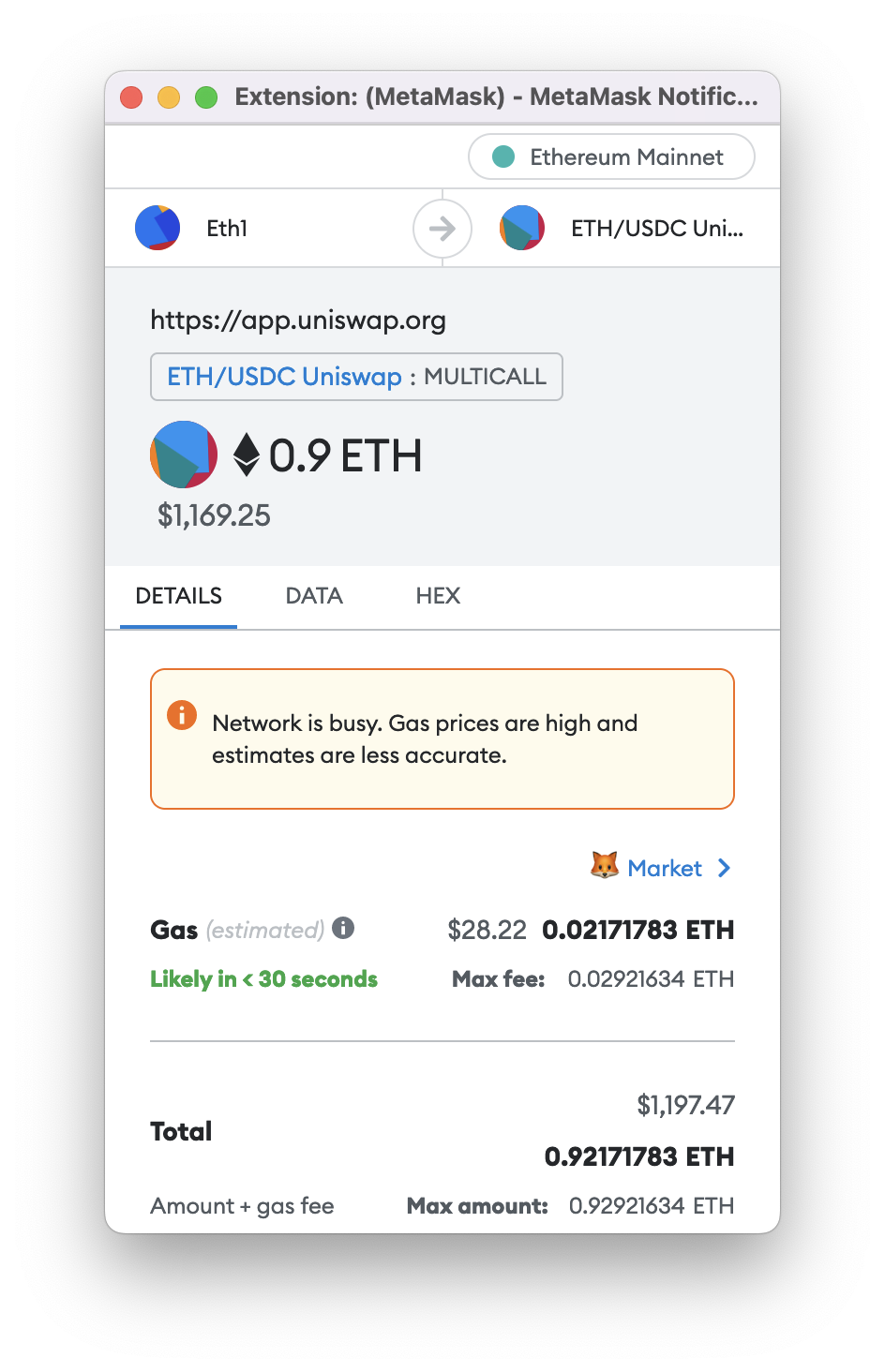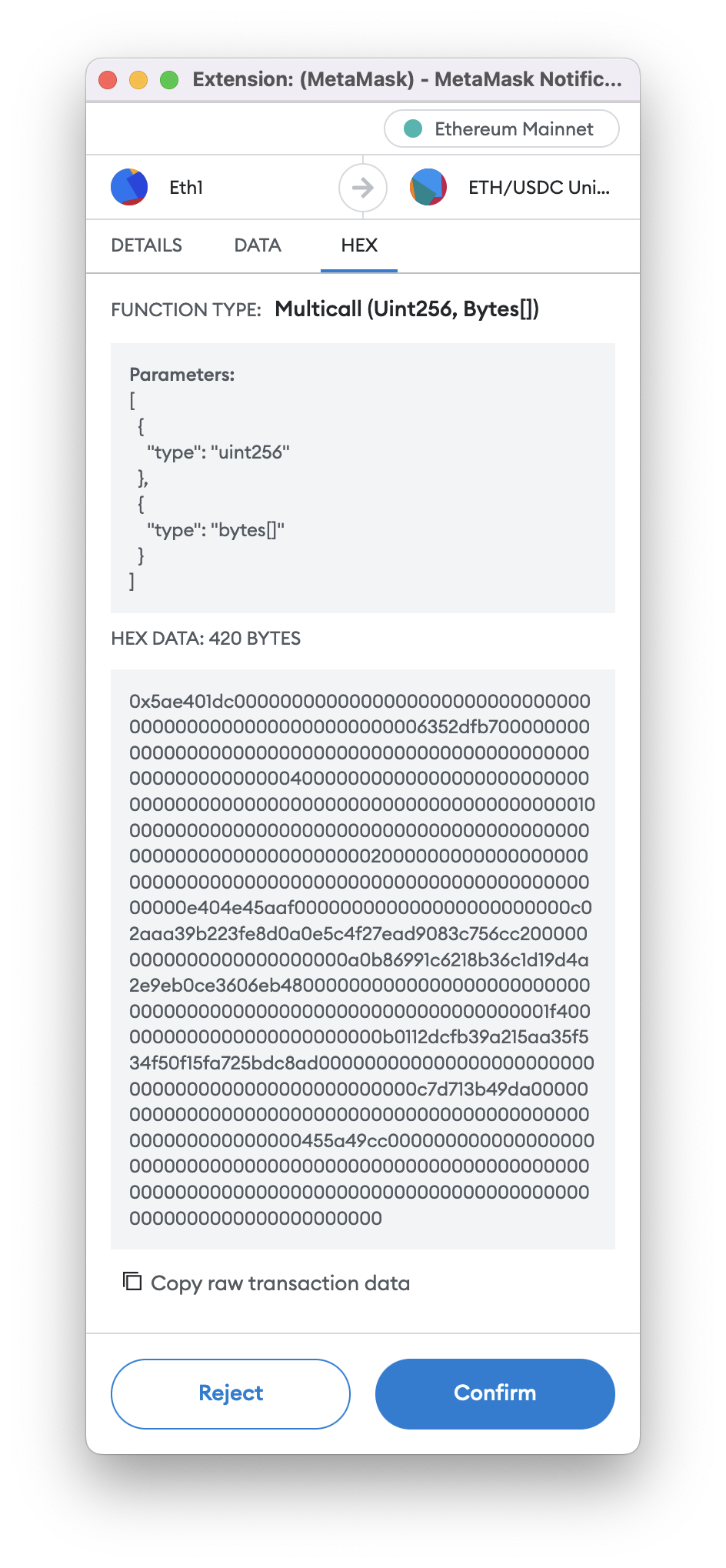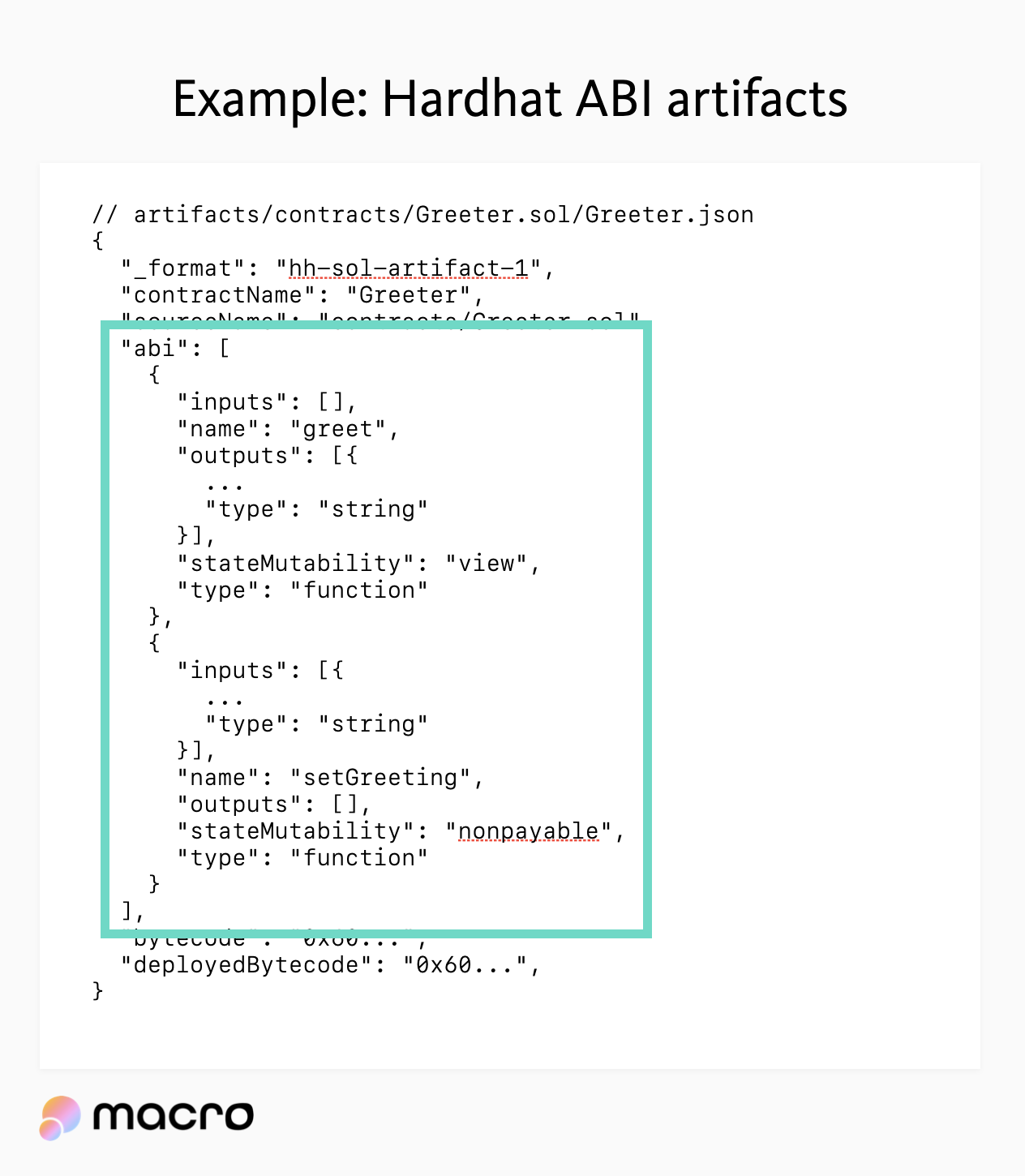🗺 Introduction to the EVM
🤖 The VM in EVM
🧱 EVM Fundamentals
☎️ EVM Function Calls
🚀 Contract Deployment
🔩 ABI Encoding
⚙️ Writing Smart Contracts in Opcodes
💠 Solidity EVM Internals
# Why Learn ABI Encoding?
Whether you’re aware of it or not, Application Binary Interfaces (ABIs) are used everywhere within the inner workings smart contracts and typical Ethereum transactions. As a Solidity / EVM developer, you will inevitably run into strange and unusual scenarios where solid knowledge of ABIs will guide you to solving the obstacles you face.
In short, ABIs are used any time a contract needs to respond to a function call.
As you can imagine, this can be very common. Let’s explore the common situations where ABIs are used:
- Transaction Data
- Contract-to-Contract Function Calls
- Hardhat & Frontend Applications
- Smart Contract Design Patterns
# Transaction Data
Any time you call a contract function on-chain using your wallet, you are sending an ABI-encoded function call.
A common example of using ABI-encoded transaction data is making a trade on Uniswap. Let’s say you want to swap ETH for USDC. You would:
- Visit the swap page web frontend and connect your wallet.
- Select ETH and USDC, enter in an amount, and click “Swap”:

Upon clicking that button, the page’s JavaScript prepares an ABI encoding of the function selector and arguments, and prompts you (via e.g. MetaMask) to create and send a transaction with that ABI encoded data as the transaction’s data field, to be sent to the contract you’re using to trade.
To continue this example, let’s take a look at what this data looks like, and in a future chapter we will learn the details of the encoding algorithm itself.
Below is a screenshot of what the MetaMask prompt could look like after clicking the “Confirm Swap” button:

Note the HEX tab – that’s what we want to look at next:

See that HEX DATA: 420 BYTES field? This is what ABI encoded data looks like! It may look scary now, but after completing the next few chapters, you will have a solid understanding of what this data is really doing.
# Contract-to-Contract Function Calls
The HEX DATA we just saw above is the exact same format of data that contracts use to interact with each other on-chain.
Concretely, any time you see an external function call in Solidity:
uint result = someExternalContract.foo(10);
This call compiles down to code that:
- Constructs an ABI-encoded message (i.e. the function selector + arguments),
- and sends that message to the
someExternalContractaddress using the CALL opcode (more on that opcode later). - The contract bytecode located at the
someExternalContractaddress then interprets that call, ABI-decoding the incoming message, running its own logic, and eventually ABI-encoding a return value. - The calling contract receives back the return value, ABI-decodes it, and continues execution.
Here is some Solidity code that is roughly equivalent to the above code snippet:
// This Solidity code:
//
// uint result = someExternalContract.foo(10);
//
// is roughly equivalent to the following:
//
(bool success, bytes memory returnData)
= someExternalContract.call(abi.encodeWithSignature('foo(uint256)', [10]));
require(success, "foo failed");
(uint result) = abi.decode(returnData, (uint));
There are more detail we could cover, but we’ll stop here and move on since this is only the introductory “why should I learn this?” lesson 🙂
# Hardhat & Frontend Applications
Both Hardhat and frontend applications use ethers.js or something similar. This library allows you to write JavaScript code that looks like this:
await greeterContract.setGreeting("Hello!");
This is nice, but how does ethers.js know what this function should do? It’s because of the contract’s ABI declarations that get generated during compilation.
For example, when you compile Solidity with Hardhat, Hardhat generates JSON files that look like the following:

In this example:
- Hardhat compiled a Greeter.sol, generating a file located at
artifacts/contracts/Greeter.sol/Greeter.json - This file contains the ABI: The declared interface of this contract. In other words, these are the functions that the contract is “promising” to the world that it will respond to, in some form or fashion.
- Ethers.js reads this file, and uses the
abiarray to generate JavaScript functions that can be used like theawait greeterContract.setGreeting("Hello!")snippet above.
# Smart Contract Design Patterns
Lastly, understanding ABIs will open the gate to fully understanding:
- Ethereum Improvement Proposals (EIPs). Proposals to Ethereum must consider all edge cases, and much of these considerations are at the binary data level.
- Solidity’s low-level
externalContract.call(). ABIs are part of the low-level concept that the Solidity docs refers to. - DAO proposal systems. Governance voting for on-chain execution is exactly ABI-encoded function calls stored in a voting proposal struct.
- Gasless transactions. EIP-2771 extends ABI calldata for its own needs.
- Contract proxy patterns, especially how function calls are delegated.
- Deploying contracts through a multisig, and its tricky function signature & arguments.
- Much, much more 🤓